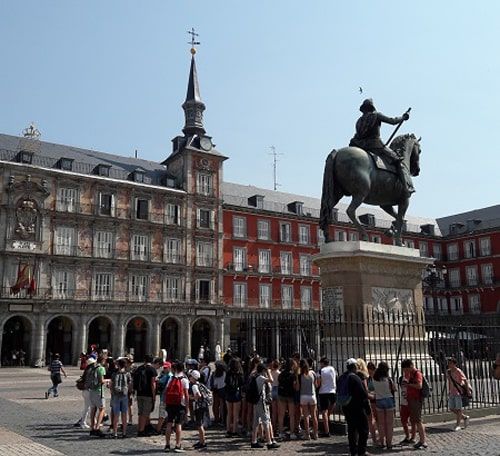The Plaza Mayor of Madrid, hundreds of years of history
In its origins, it was the Plaza del Arrabal, in the suburb of Santa Cruz, outside the walled enclosure of the city. The Plaza was formed by a market without any order or concert, under the arcades of some of the houses of the merchants who lived in this area, mostly Jews.





